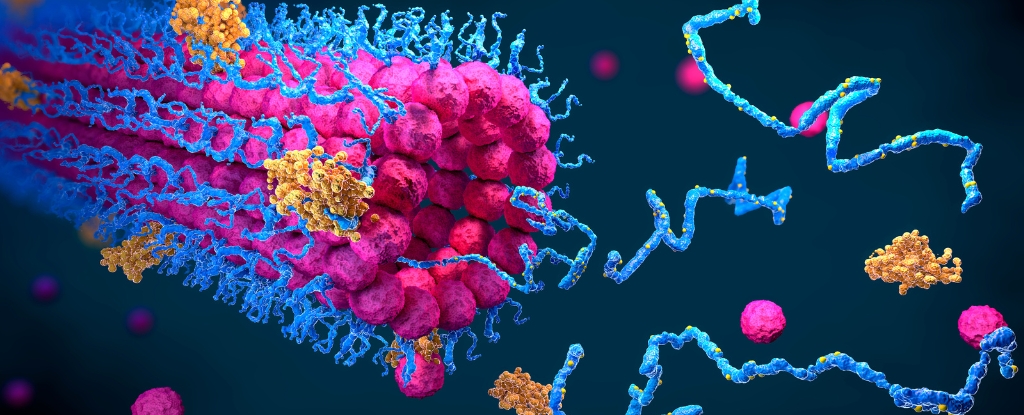Place your adverts here on InfoDig @ low rates; banner ads, sponsored links and guest articles etc. Contact us
 Self-oscillations (red and blue) guide sound waves (green, orange, purple) in only one direction through the circulator. (Xin Zou)
Self-oscillations (red and blue) guide sound waves (green, orange, purple) in only one direction through the circulator. (Xin Zou)
Imagine three people huddled in a circle so when one speaks, only one other hears. Scientists have created a device that works like that, ensuring sound waves ripple in one direction only.
The device, developed by scientists at ETH Zurich and the Swiss Federal Institute of Technology Lausanne, is made up of a disk-shaped cavity with three equally-spaced ports that can each send or receive sound.
In an inactive state, sound transmitted from port 1 is audible to ports 2 and 3 at equal volumes. Sound waves bounce back to port 1 as an echo as well.
When the system is running, however, only port 2 hears port 1's sounds.
The trick is to blow swirling air into the cavity at a specific speed and intensity, which allows the sound waves to synchronize in a repeating pattern. That not only guides the sound waves in a single direction, but gives more energy to those oscillations so they don't dissipate. It's kind of like a roundabout for sound.
The scientists say their technique may inform the design of future communications technologies. New metamaterials could be made to manipulate not just sound waves but potentially electromagnetic waves too.
"This concept of loss-compensated non-reciprocal wave propagation is, in our view, an important result that can also be transferred to other systems," says senior researcher Nicolas Noiray.
Like waves of light or water, sound waves in a typical medium are reciprocal, meaning their oscillations can propagate backwards as easily as they do forwards.
For any pair of sender and receiver, you can swap the roles and the function would stay the same. To return to the analogy from earlier, two people in a room conversing at the same volume with no obstacles between them can hear each other clearly as the sound waves move freely in both directions.
There are times when it would be useful to make sound non-reciprocal, perhaps when noise suppression is required. In 2014, researchers at the University of Texas at Austin developed an acoustic circulator, which used small fans to blow air through a resonant ring. When sound enters from one of three ports, the sound waves become non-reciprocal and can only be heard at one of the other ports, not both.
There was a catch, though: the sound dissipated as it traveled, weakening the waves that arrived at the destination. So the ETH Zurich team set out to prevent the sound waves from losing energy on their one-way journey.
 Left: The experimental setup. Right: A diagram of the circulator, with arrows indicating the single direction of sound waves. (Nicolas Noiray/ETH Zurich)
Left: The experimental setup. Right: A diagram of the circulator, with arrows indicating the single direction of sound waves. (Nicolas Noiray/ETH Zurich)In this case, air swirled down a pipe enters the ring from the center, causing it to whistle. This creates self-sustaining oscillations in the acoustic pressure inside the cavity. By tuning these oscillations to the frequency of the sound waves going in, the waves can actually gain energy, preventing them from weakening.
The team built the acoustic circulator and tested their design, sending sound waves with a frequency of about 800 Hz from one waveguide and measuring how they arrived at the other two.
Sure enough, by the time the waves reached the second waveguide they hadn't weakened – on the contrary, they were actually stronger than when they were transmitted. No sound waves were detected at the third waveguide, showing both goals had been achieved.
Ironically, the idea behind using oscillations to strengthen sound waves came about from work aiming to reduce them. Oscillations interacting with sound waves can be damaging to some systems, such as aircraft engines, but Noiray realized they could be harnessed for good, too.
The team says the acoustic circulator could help other scientists study sound wave propagation and manipulation. The general concept could even be put to work guiding electromagnetic waves for better radar or communications systems.
The research was published in the journal Nature Communications.














 English (US) ·
English (US) ·